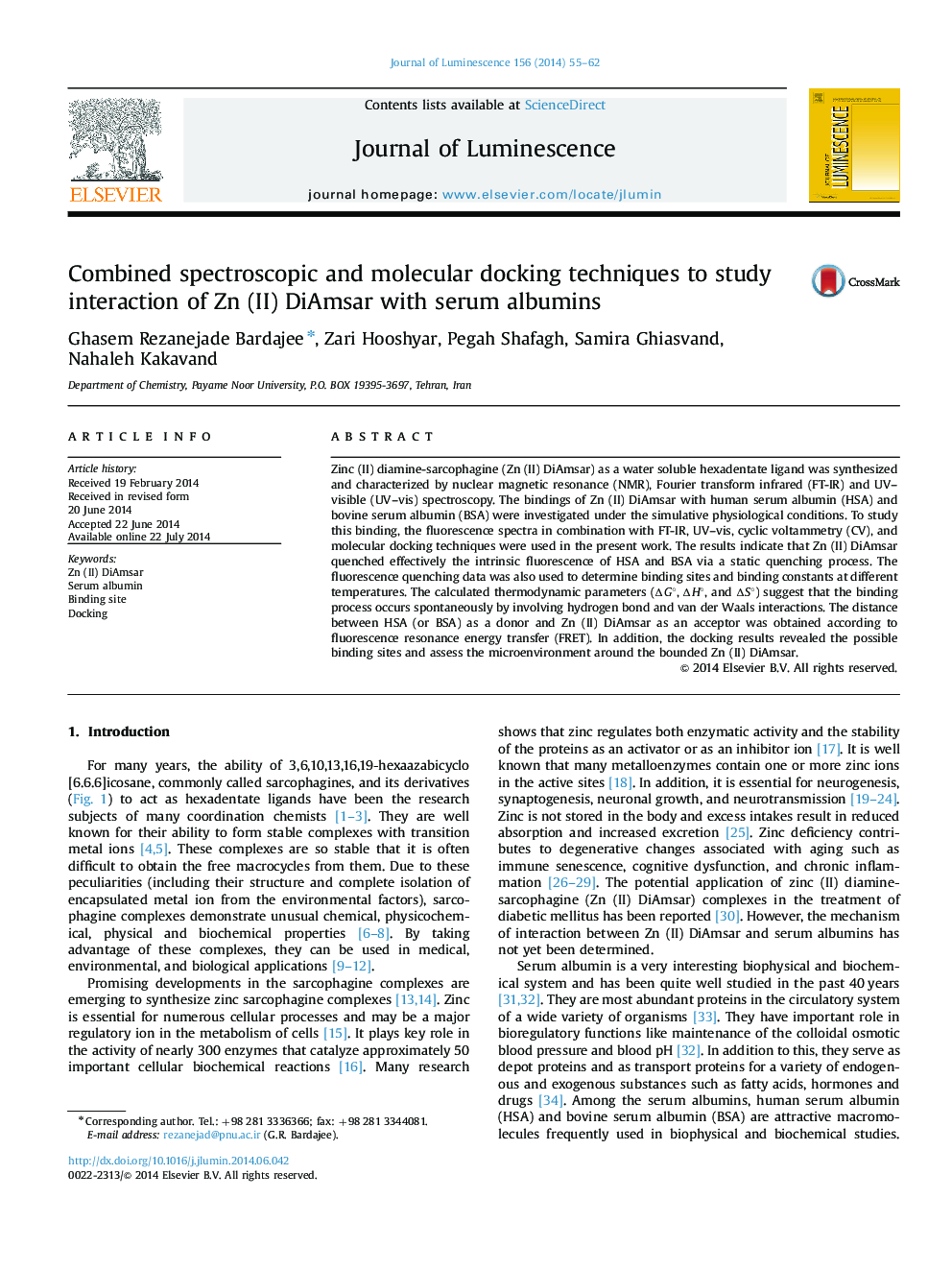| Article ID | Journal | Published Year | Pages | File Type |
|---|---|---|---|---|
| 5399837 | Journal of Luminescence | 2014 | 8 Pages |
Abstract
Zinc (II) diamine-sarcophagine (Zn (II) DiAmsar) as a water soluble hexadentate ligand was synthesized and characterized by nuclear magnetic resonance (NMR), Fourier transform infrared (FT-IR) and UV-visible (UV-vis) spectroscopy. The bindings of Zn (II) DiAmsar with human serum albumin (HSA) and bovine serum albumin (BSA) were investigated under the simulative physiological conditions. To study this binding, the fluorescence spectra in combination with FT-IR, UV-vis, cyclic voltammetry (CV), and molecular docking techniques were used in the present work. The results indicate that Zn (II) DiAmsar quenched effectively the intrinsic fluorescence of HSA and BSA via a static quenching process. The fluorescence quenching data was also used to determine binding sites and binding constants at different temperatures. The calculated thermodynamic parameters (âG°, âH°, and âS°) suggest that the binding process occurs spontaneously by involving hydrogen bond and van der Waals interactions. The distance between HSA (or BSA) as a donor and Zn (II) DiAmsar as an acceptor was obtained according to fluorescence resonance energy transfer (FRET). In addition, the docking results revealed the possible binding sites and assess the microenvironment around the bounded Zn (II) DiAmsar.
Keywords
Related Topics
Physical Sciences and Engineering
Chemistry
Physical and Theoretical Chemistry
Authors
Ghasem Rezanejade Bardajee, Zari Hooshyar, Pegah Shafagh, Samira Ghiasvand, Nahaleh Kakavand,
